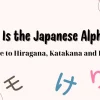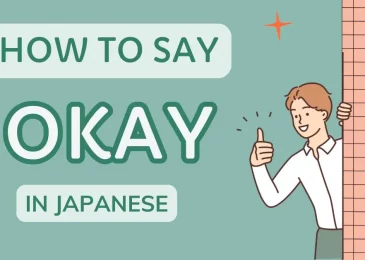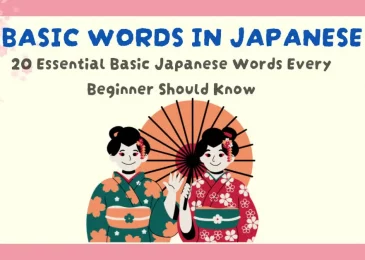Learning to ask questions in Japanese is a foundational skill for beginners, especially when trying to navigate everyday situations. Understanding how to say “What” in Japanese, along with other essential question words, can help you ask for directions, clarify details, and connect with others more deeply. In this guide, we’ll look at the various ways to ask “What” in Japanese, explore related phrases, and introduce other question words. By the end of this article, you’ll have a strong understanding of how to ask questions politely and naturally in Japanese.
1. “What” in Japanese
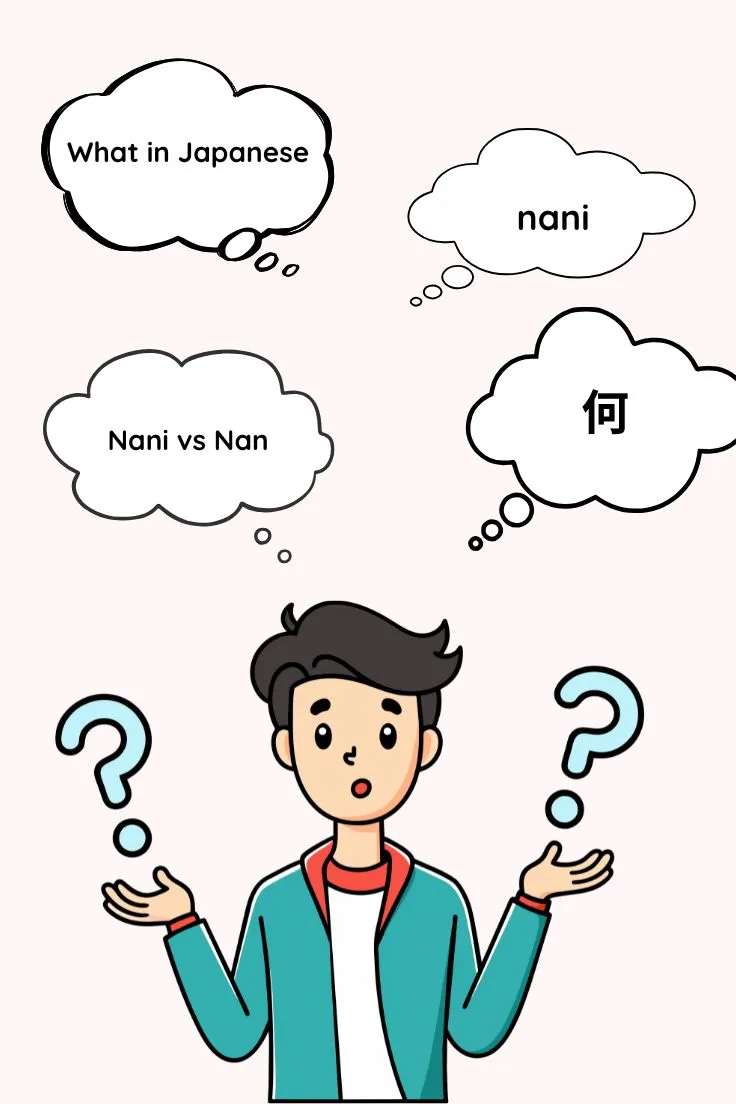
The Japanese word for “What” is 何 (nani), a character commonly used in everyday questions. The pronunciation and use of 何 can change depending on the sentence structure and context, so it’s important to understand when to use nani versus nan.
How to Use “何” (nani) Alone
In informal situations, nani can be used by itself to ask, “What?” This is a common expression when you’re surprised or confused, and it’s primarily used with people you know well, such as friends or family.
For example:
- 何? (Nani?) – “What?”
Keep in mind, this usage is very casual, so it’s not recommended for use in formal situations.
“Nani” vs “Nan”: The rule of sound changes
In many sentences, “nani” changes to “nan” based on the word that follows. This change is primarily due to the need for smoother pronunciation and to fit the natural flow of the language. Generally, “nani” becomes “nan” when followed by ですか (desu ka) or certain verbs.
a. なん (nan) is used in the following cases:
- When the following word begins with sounds in the 「た」 (ta), 「だ」 (da), or 「な」 (na) rows.
For example:
これはなんですか? (Kore wa nan desu ka?) – What is this?
- When it is followed by a counting suffix.
For example:
このクラスに外国人はなんにんいますか? (Kono kurasu ni gaikokujin ga nan nin imasu ka?) – How many foreigners are there in this class?
b. なに (nani) is used in all other cases.
For example:
何を食べますか? (Nani o tabemasu ka?) – “What will you eat?”
Using “nan” instead of “nani” in these specific cases helps make the question sound more natural.
2. Practical phrases using “what” in Japanese
Let’s look at some common phrases involving “What” that you’re likely to use in Japanese:
What is this? – これは何ですか? (Kore wa nan desu ka?)
- This is the standard way to ask about an unfamiliar object. It’s polite and direct, making it useful in both formal and informal settings.
- Example: You’re at a Japanese restaurant and see a dish you don’t recognize. You can ask, これは何ですか? (“What is this?”).
What is that? – あれは何ですか? (Are wa nan desu ka?)
- Use あれ (are) when referring to something that’s far from both you and the person you’re talking to.
- Example: If you see a statue in the distance and want to know what it is, you can ask, あれは何ですか?
What do you want? – 何が欲しいですか? (Nani ga hoshii desu ka?)
- This phrase is commonly used when offering someone a choice.
- Example: If you’re shopping with a friend and want to know what they want, you can ask, 何が欲しいですか?
These expressions give you a flexible way to ask about different things in Japanese while keeping the conversation polite and natural.
3. Understanding “何か” (Nani ka) for “something” and “anything”
The phrase 何か (nani ka) translates to “something” or “anything,” and it’s frequently used when you want to be vague or allow for a general answer. It’s particularly useful when offering something without specifying.
For example:
- 何か飲みますか? (Nani ka nomimasu ka?) – “Would you like something to drink?”
In this case, 何か adds flexibility, allowing the listener to respond with any choice they prefer.
Differentiating between “anything” and “nothing”
- 何も (nanimo) means “nothing” when used in a negative sentence. For example:
- 何もありません (Nanimo arimasen) – “There’s nothing.”
This small change helps you navigate both positive and negative answers in Japanese more naturally.
4. Essential Japanese question words beyond “what”
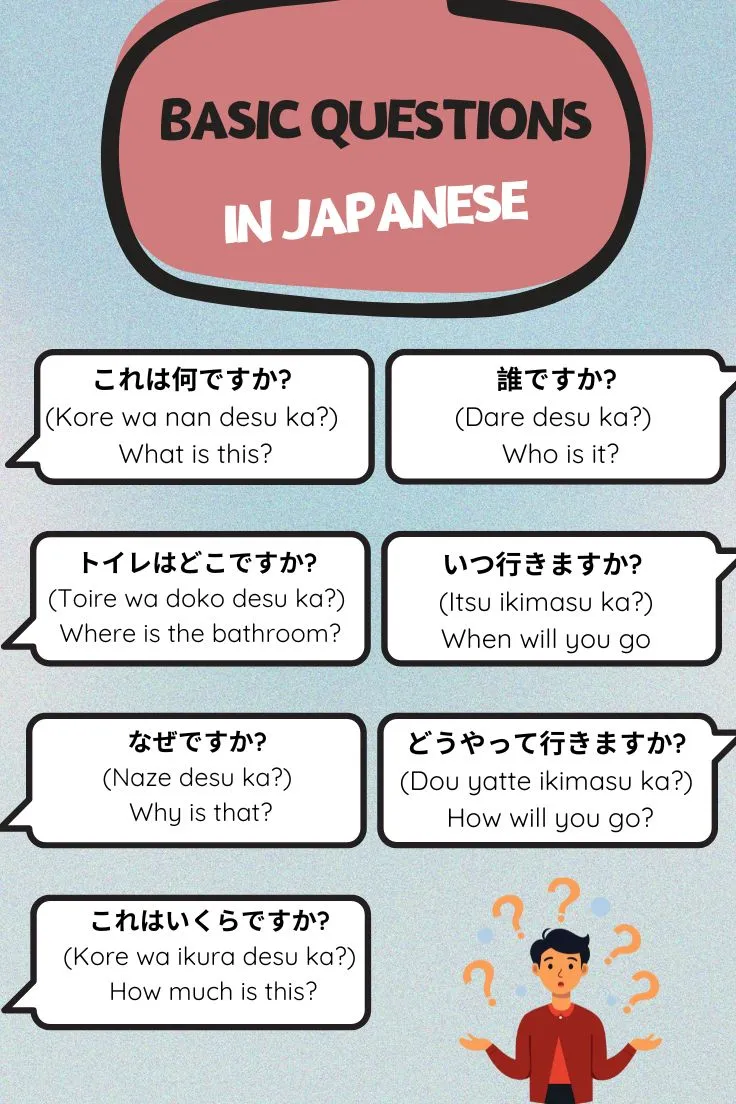
In Japanese, mastering additional question words can significantly expand your conversational abilities. Here’s a breakdown of the most important question words and their uses:
| English | Japanese | Romaji | Example |
| What | 何 | Nani/Nan | これは何ですか? (Kore wa nan desu ka?) – What is this? |
| Who | 誰 | Dare | 誰ですか? (Dare desu ka?) – Who is it? |
| Where | どこ | Doko | トイレはどこですか? (Toire wa doko desu ka?) – Where is the bathroom? |
| When | いつ | Itsu | いつ行きますか? (Itsu ikimasu ka?) – When will you go? |
| Why | なぜ/どうして | Naze/Doushite | なぜですか? (Naze desu ka?) – Why is that? |
| How | どう | Dou | どうやって行きますか? (Dou yatte ikimasu ka?) – How will you go? |
| How much | いくら | Ikura | これはいくらですか? (Kore wa ikura desu ka?) – How much is this? |
Knowing these question words can help you ask more specific questions and explore a wider variety of topics in Japanese.
5. Contextual examples of “what” and other question words in conversations
Seeing question words in action can help reinforce your understanding. Here are some examples:
Example 1: Asking about objects
- Person A: これは何ですか? (Kore wa nan desu ka?) – “What is this?”
- Person B: それはお茶です (Sore wa ocha desu) – “That is tea.”
Example 2: Showing curiosity or surprise
- Person A: 昨日何をしましたか? (Kinou nani o shimashita ka?) – “What did you do yesterday?”
- Person B: 映画を見ました (Eiga o mimashita) – “I watched a movie.”
Example 3: Offering options or choices
- Person A: 何を食べたいですか? (Nani o tabetai desu ka?) – “What do you want to eat?”
- Person B: カレーが食べたいです (Karee ga tabetai desu) – “I want to eat curry.”
6. Cultural insights: Asking questions politely in Japanese
Politeness is central to Japanese culture, and this applies to asking questions too. When asking “What?” or any other question, especially in formal settings, it’s common to add polite phrases like すみません (sumimasen) or 失礼します (shitsurei shimasu).
For instance:
- すみません、これは何ですか? (Sumimasen, kore wa nan desu ka?) – “Excuse me, what is this?”
Adding polite expressions can help avoid misunderstandings and ensure that your questions are received warmly, reflecting respect and sensitivity to Japanese cultural norms.
7. Common mistakes with “what” in Japanese and how to avoid them
When learning how to say “What” in Japanese, it’s easy to make mistakes. Here are some common pitfalls and tips to avoid them:
Using “何” (nani) Incorrectly
Beginners sometimes use nani in contexts where nan is required. Always double-check if 何 needs to be changed based on the word that follows, especially ですか or verbs.
Skipping Politeness Markers
Japanese places great importance on politeness. Make sure to add ですか at the end of questions, especially with people you don’t know well.
Direct Translations from English
Avoid directly translating English phrases into Japanese, as this can create awkward sentences. For example, “What are you doing?” should be 何をしていますか? (Nani o shiteimasu ka?) instead of あなたは何を?
By paying attention to these tips, you’ll sound more natural when asking questions in Japanese.
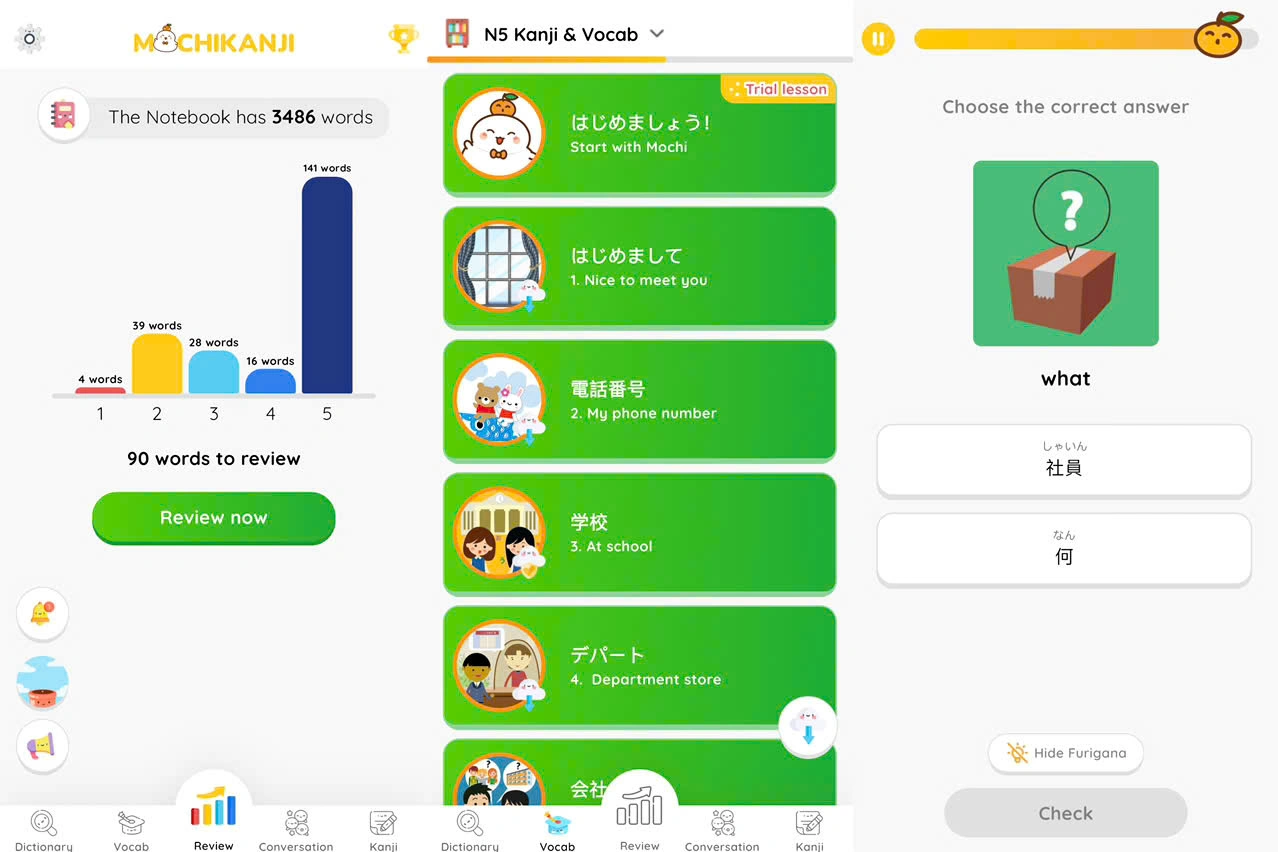
For a more interactive experience, try using MochiKanji to reinforce these question words through flashcards with sound and visuals. MochiKanji also provides basic conversation practice to help you use these phrases in realistic contexts. Their Golden Time feature optimizes your review timing, making it easier to remember what you’ve learned.
Conclusion
Understanding how to say “What” in Japanese and other essential question words gives you a powerful toolset for everyday communication. With practice and attention to cultural nuances, you’ll be able to ask questions confidently and engage more meaningfully with Japanese speakers. Keep practicing, stay curious, and don’t be afraid to ask questions as you continue your journey in mastering Japanese!

